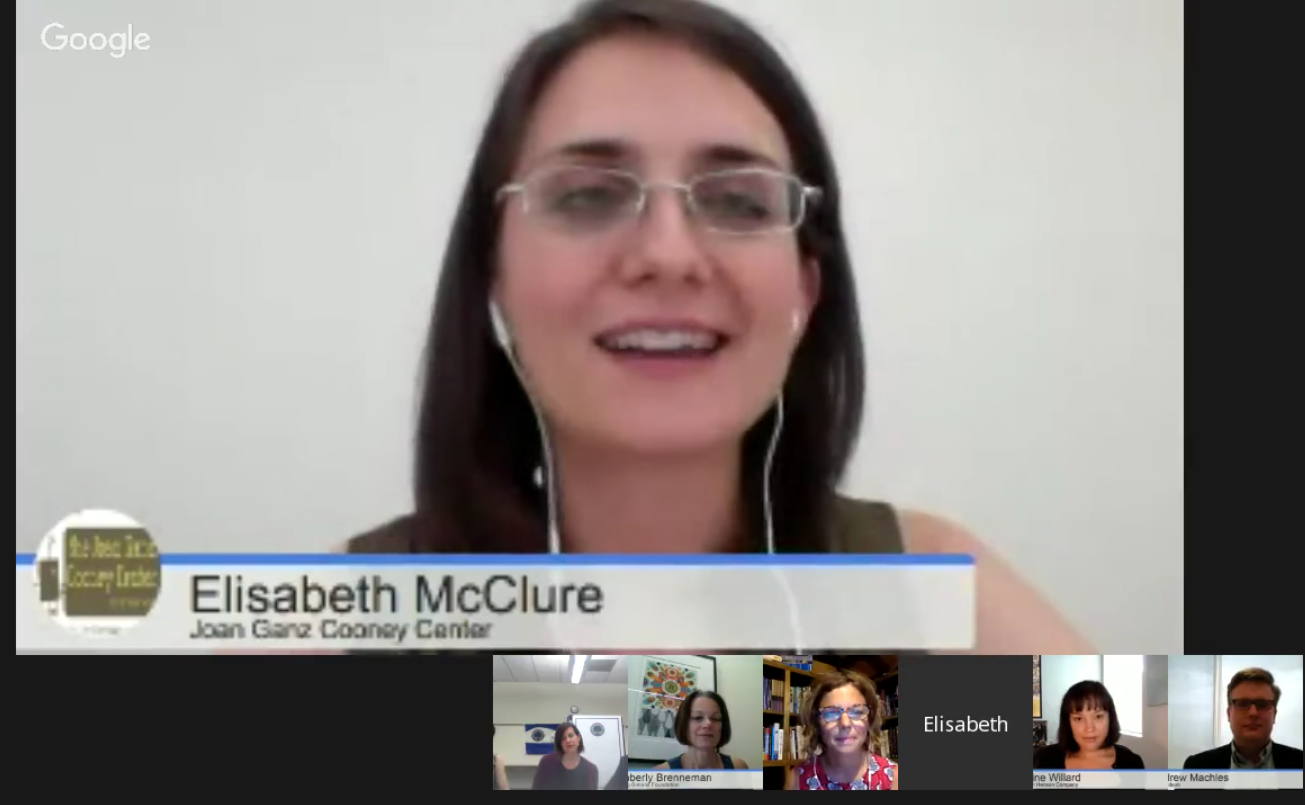In April, the White House hosted an Early STEM Learning Symposium with the U.S. Departments of Education and Health and Human Services and Invest in US to discuss the importance of active science, technology, engineering, and math (STEM) learning for our youngest children. Just a few months later, the Joan Ganz Cooney Center and New America convened leaders from research, policy, philanthropy, and practice to follow up on the White House symposium and create a national action agenda for early STEM learning.
Since then, the momentum around #STEMStartsEarly has continued to build, and the STEM Office of the Department of Education has embraced technology as a way of gathering leaders online with a series of Google Hangouts to discuss issues around creating pathways for teaching STEM to young children. In this first hangout, which took place on July 13, 2016, Cooney Center Fellow Elisabeth McClure joined Melissa Moritz, Deputy Director, Office of STEM, Libby Doggett, Deputy Assistant Secretary for Policy and Early Learning, Office of Elementary and Secondary Education, and Russell Shilling, Executive Director of STEM, as well as Andrew Machles (Nickelodeon), Kim Brenneman, (The Heising-Simons Foundation), Emily Roden (Ready Rosie), and Celine Willard from the Jim Henson Company. You can watch the entire conversation below.
Join the next Hangout on Wednesday, August 3 for a discussion on system-wide efforts to support early STEM learning.
